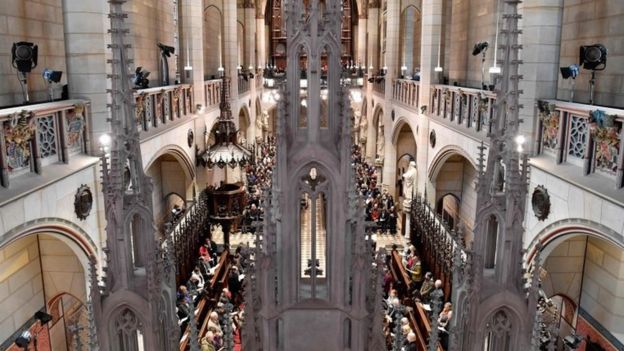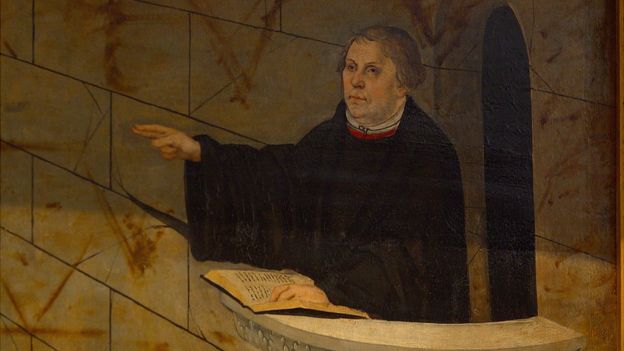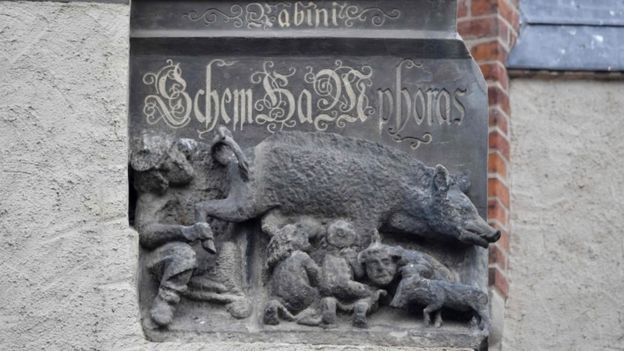Reformation: Four things about the 500th anniversary celebrations

The groundbreaking criticism of the Roman Catholic Church by the German theologian, Martin Luther, eventually changed the face of Christianity
An exceptional religious administration is being held in the German town of Wittenberg to stamp the 500th commemoration of the Reformation.
On this day in 1517, Martin Luther is said to have nailed 95 proposals to the entryway of All Saints' Church in the town.
The scholar said Christians couldn't purchase or gain their way into paradise yet just enter by the beauty of God.
His feedback prompted a split with the Roman Catholic Church and the introduction of Protestantism.
The Reformation caused enduring change in Europe, prompting wars and abuse, yet in addition to more prominent opportunity of religion and articulation.
Here are four things to think about Tuesday's occasions:
1. German pioneers going to services
Chancellor Angela Merkel and President Frank-Walter Steinmeier are going to a few functions in Wittenberg, beginning with an administration at All Saints' Church (Schlosskirche) - where Luther is said to have first shown his rundown of reactions in 1517.

The special service will take place at the All Saints' Church (Schlosskirche), where Luther is said to have nailed his criticisms to the door
It denotes the finish of year-long festivals by Protestants in many German towns and urban communities.
In front of the commemoration, Mrs Merkel said the services gave "the chance to consider what changes came about because of the Reformation".
2. Re-establishments in chronicled city
The focal point of Wittenberg has been changed to reproduce the medieval period in which Luther lived, with exhibitions occurring for the duration of the day.

A traditional wood cutter at a medieval-style market in the main square in Wittenberg
A large number of guests from around the globe have gone by the town - around 100km (60 miles) south-west of Berlin - lately as it shapes the concentration of the commemoration festivities.
Germany is likewise stamping 31 October with a national open occasion.
Presentational dark line
What was the Reformation?
A religious development which tested the lessons of the Roman Catholic Church
Started in Germany in 1517 yet soon spread all through quite a bit of northern Europe
Held that salvation dropped by effortlessness through confidence alone, not by acts of kindness or installment
Prompted the production of Protestant places of worship isolate from the Roman Catholic Church
The Church of England parted from the Roman Catholic Church later in the sixteenth Century
3. Catholics and Lutherans ask 'absolution'
As the Reformation spread through Europe, it was set apart by bleeding scenes of fighting and brutality.
Wars were pursued in focal, western and northern Europe from 1524 to 1649, fuelled by the religious contention that Luther had unwittingly roused.

Luther challenged the Catholic clerics' practice of selling "indulgences" to worshippers
In the long run, the Protestant and Catholic Churches would exist together calmly, yet with no formal connections.
On Tuesday, Catholic and Lutheran pioneers issued a joint explanation saying they asked absolution for the brutality pursued.
"We asked pardoning for our disappointments and for the courses in which Christians have injured the Body of the Lord and affronted each other amid the a long time since the start of the Reformation until today," the Vatican and Lutheran World Federation said.
They included that, while the past couldn't be changed, its impact could be changed to end up noticeably an indication of seek after the world to beat division.
Read all the more: How Martin Luther's thoughts kept going 500 years
4. Line over against Semitic cutting
After Luther understood that he would not have the capacity to change over Jews to his variant of Christianity, he released a tirade of hostile to Semitic compositions.
He contended that Jewish synagogues, schools and homes ought to be determined to flame, their benefits reallocated and that they ought to be utilized as constrained work and removed.
His writings, for example, On the Jews and Their Lies, were utilized widely by the Nazis.

The offensive sculpture on Wittenberg's town church, showing Jews suckling the teats of a sow, is an example of anti-Semitic folk art once common in Europe
In the midst of functions denoting Luther's inheritance 500 years on, there have likewise been challenges around a hostile to Semitic model (Judensau) which stays on the exterior of another congregation in Wittenberg.
There have been calls to evacuate the hostile stone picture, which demonstrates Jews suckling the nipples of a sow as a rabbi looks eagerly under its leg and tail.
Comments
Post a Comment